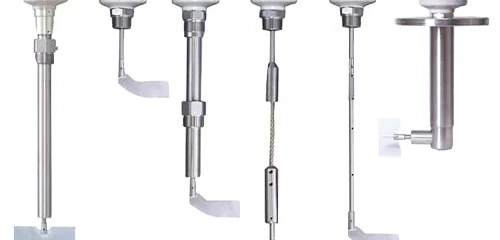Free UK Shipping over £100
Fast Shipping
Worldwide Shipping
Technical Sales Team

Level Instrument selection can lead to a lot of head-scratching if you don't know what you're doing! Luckily, Hunter Vegas, Project Engineering Manager for Wunderlich-Malec in California, has written a complete guide for In-Tech Magazine! (So we thought we'd share it with you)
If you're constantly confused about Level, have a read of this:
In the January/February 2013 issue of InTech, Donald Gillum wrote an excellent article called "Level measurement." In that article, Gillum discussed the various types of level instrumentation used by industry today and described how they work and some of the advantages and disadvantages of each.
This article is a follow-up to Gillum's article and will focus on how an engineer might select a level instrument and the specific reasons why one type might be chosen over another. Before beginning this topic, it is important to stress that no technology is perfect for every situation. Each type of level instrument has advantages and disadvantages and may work great in one situation and be inoperable in another. Also, instrumentation vendors are continuously improving their equipment to overcome weaknesses in their particular class of level device. Therefore it may be possible for one brand of the instrument to overcome or compensate for an issue that normally vexes competing products. However, before trying a particular device that might have problems, consider obtaining an agreement from the vendor guaranteeing the device and allowing a full refund should it fail to function as promised. The refund will not cover the cost of the installation and replacement, but the vendor will have a strong incentive to make sure the device is successful.
To determine the right technology for a particular application, you must know the following:
1. How does each type of level technology actually work? You cannot determine if a particular level instrument will function in a given application if you do not understand how that device works.
2. In what conditions must the instrument perform? There are obvious conditions, such as temperature, pressure, and the general contents of the vessel, but there are also less obvious issues such as:
3. What is the required accuracy and repeatability of the level reading?
4. Can the vessel be taken out of service for maintenance, and is there any way to independently verify the level for calibration?
5. What are the details of the vessel itself?
The vessel geometry and layout of the associated piping will often affect the selection of an instrument. You need to answer such questions as:
Without complete answers to these questions, the engineer will find it very hard to choose an instrument, because the answers will usually determine which instruments will work and which will not. Let us reconsider these same questions and see how they can quickly eliminate many level instrument options:
There are many “show stoppers” that can eliminate a particular level technology. Here is a shortlist of some of them:
The required accuracy and repeatability of the measurement can significantly impact the selection of the level instrument. If the level instrument is used for custody transfer, then maximum accuracy and repeatability are paramount. However, in other cases, accuracy within a percent or two is perfectly acceptable. Some level technologies are capable of extremely high accuracies, while others can offer improved accuracy by employing additional compensating measurements. Before beginning the selection process, it is important to understand how precise the measurement must be.
The ability to take an instrument out of service can radically affect the choice of instrument. If the instrument is adversely affected by product build over time, then the instrument must be removed for routine cleaning to ensure reliable operation. If the instrument cannot be removed for service, then a different technology should be considered.
It is also important to know if the device's measurement can be independently verified. Safety integrity level devices usually require some type of routine calibration to document that the device is functioning properly. Some technologies, such as DP transmitters and weigh cells, are inherently easy to calibrate. Others must be calibrated on an actual level, such as capacitance or nuclear technologies. Still other technologies, such as radar or ultrasonic, usually require no calibration. These types of instruments are easier to set up initially. However, once they are in service, it is difficult to verify their operation unless there is another way to determine the true level in the vessel.
The geometry of the vessel itself may eliminate several technologies. Large agitator blades or internal coils may render several technologies unusable unless some type of stilling well can be installed. There may be no available nozzles to install a DP transmitter, or the nozzles on the top of the tank may not be large enough for a radar device.
Clearly these five questions can significantly affect your options in choosing a level device—so take the time to fully understand the application before considering the measurement options.
For more information on the Level Instruments we can offer or for general advice or product selection please give our sales team a call on 0151 343 9966
Contact our technical sales advisors here.
Our team of engineers are fully equipped to provide bespoke system design and manufacture.
This process involves specifying, procuring, calibrating and maintaining instrumentation and control systems for industrial and commercial process control applications.
Call our technical sales team for advice

This site uses cookies to monitor site performance and provide a more responsive and personalised experience. You must agree to our use of certain cookies. For more information on how we use and manage cookies, please read our Privacy Policy.